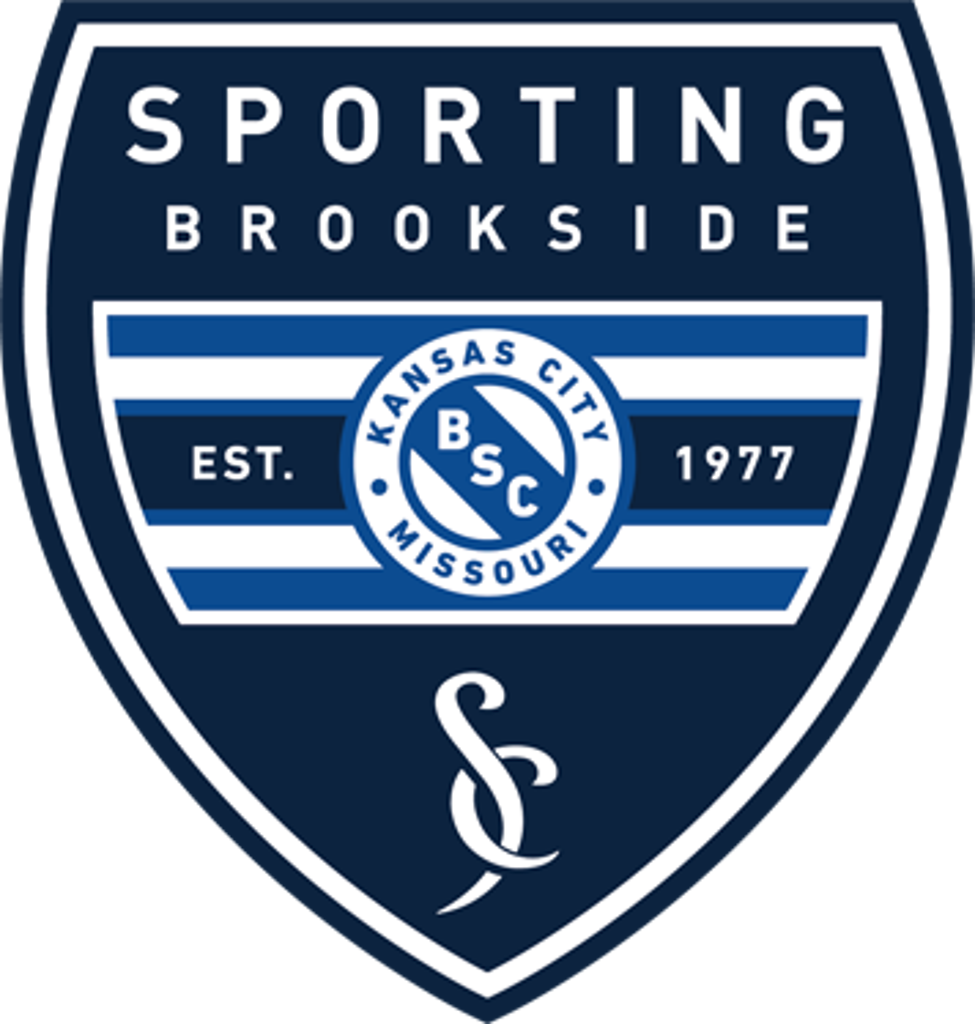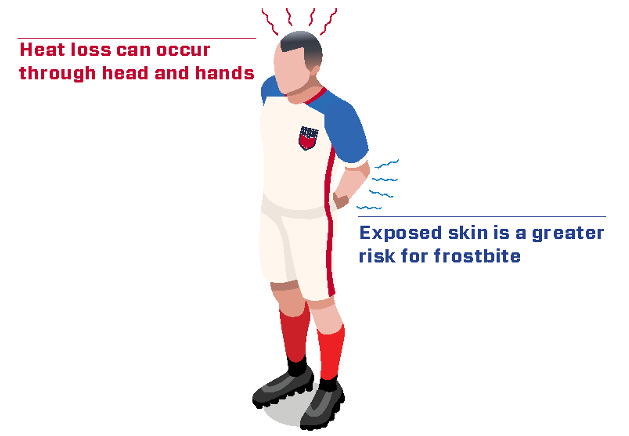ENVIRONMENTAL CONDITIONS
Environmental conditions can significantly impact player health and safety. Extreme temperatures, severe weather and the integrity of the playing field and its equipment all impact players’ ability to practice and compete safely. U.S. Soccer’s RECOGNIZE TO RECOVER program gives players, parents, coaches and referees information and guidelines to make sure the desire to play does not cloud the decision-making process when it comes to evaluating environmental conditions to ensure the safety of those on the field.
HEAT GUIDELINES
Extreme heat can impact players' health and safe play. Proper hydration and knowing when you need to drink are critical, to help prevent many injuries and illnesses, from muscle cramps to heat stroke. Players should drink water before, during and after a game or practice, which means coaches and parents should make sure there is adequate water available.
RECOVER
- Add hydration breaks
- Shorten practice
- Practice early or late in the day when temperatures are lower
- Use less-strenuous training activities during practice
U.S. Soccer Heat Guidelines
Heat Guidelines Contributors: Korey Stringer Institute and Dr. George Chiampas
U.S. Soccer Cold Weather Guidelines
Cold Weather Guidelines Contributors: Athletico, Korey Stringer Institute and Dr. George Chiampas
RECOGNIZE
Thirst is a warning that your body is already in an early stage of dehydration. Drink when you are thirsty. Recognizing the signs of dehydration are important because the amount of water required will vary from player to player.
- Dry, sticky mouth
- Sleepiness or tiredness
- Headache
- Dizziness or lightheadedness
- Rapid heartbeat
- Rapid breathing
- Fever
- In the most serious cases, delirium or unconsciousness
Heat-related illnesses, such as heat stroke and heat exhaustion can be serious and potentially life-threatening conditions. U.S. Soccer’s RECOGNIZE TO RECOVER program prepared this guide for coaches, referees and players when training or playing in warmer climates, outlining recommendations for hydration breaks and participant safety during extreme temperature conditions. The information provided herein is not a substitute for medical or professional care, and you should not use the information in place of a visit, consultation or the advice of your physician or other healthcare provider. For specific questions and concerns, please consult your healthcare provider or physician.
HEAT-RELATED ILLNESS
Heat-related illnesses, such as heat exhaustion and exertional heat stroke (EHS), can be serious and potentially life-threatening conditions which can be brought on or intensified by physical activity. Recognizing the signs and symptoms as early as possible allows for treatment and rapid recovery with hydration and cooling down the individual.
- Early signs and symptoms of heat illness include; weakness, fatigue, headache, nausea and dizziness
- Altered mental status, such as confusion, irritability, aggressive behavior, dizziness
- Slurred speech
- Hallucinations
- Loss of balance, falling down
- Throbbing headache
- Body temperature above 104 degrees Fahrenheit
- Complaining of chills, while skin may be warm to the touch
Preventing heat related illness is the best medicine. It may become important to adjust training, match play and hydration breaks when playing in warmer climates and during extreme temperature conditions.
COLD WEATHER
The effects of cold weather can impact health and safety during practices and games. The definition of “cold stress” varies across the United States, depending on how accustomed people are to cold weather. A player from Minnesota will have a much different threshold for cold than a player from Florida.
U.S. Soccer’s RECOGNIZE TO RECOVER program prepared this guide for coaches, referees and players for training or playing in colder climates. Additionally, it serves as a guide for match play and participant safety during extreme temperature conditions. The information provided is not a substitute for medical or professional care, and you should not use the information in place of a visit, consultation or the advice of your physician or other healthcare provider. For specific questions and concerns, please consult your health care provider or physician.
COLD WEATHER SAFETY TIPS
Stay Dry
Wet and damp conditions add to the risk of injury or illness during cold weather. Players, coaches and referees should recognize these factors and use additional caution to watch for potential cold injuries.
If players do get wet during training or play, remove wet or saturated clothing and replace it with dry clothing. This becomes more important if the individual will remain out of play or anticipates standing around for a prolonged period of time. A hat, gloves and extra pair of socks can also keep extremities dry in case of snow or rain.
Dress for the Cold
When temperatures drop and wind increases, the body loses heat more rapidly. It is important to dress appropriately when training or playing in cold weather. This also means to not overdress.
Layering clothing in a specific way (see box) is recommended and very effective. The layers can be added or removed based on body temperature and changing environmental conditions, such as temperature and wind. Allow players to wear additional clothing, like gloves, sweatshirts, sweat pants and/or hats or headbands. Also, avoid sweating before going outside because your body will cool too quickly.
Wind Chill
Pay attention to the wind chill temperature (WCT) Index. (see chart below) Even prolonged exposure in relatively mild temperatures can lead to frostbite. The National Weather Service wind chill chart can serve as a guide to safe play in cold weather.
Stay Hydrated
Cold weather often reduces our ability to recognize that we are becoming dehydrated. If you are thirsty you have already become dehydrated. Try putting warm or hot water in a water bottle so that your water doesn’t freeze when training for extended amounts of time outside.
Take Action
If someone is suffering from a cold-related illness, get him or her into a warm location as soon as possible. Identify a nearby warming location before the start of training or play.
During games provide blankets or other items for players to stay warm while they are on the bench and allow additional substitutions or warming breaks.
COMMON COLD RELATED ILLNESSES
HYPOTHERMIA
Hypothermia is the result of your internal body temperature dropping to 95 degrees Fahrenheit (35 degrees Celsius) or less. It can be fatal if not detected promptly and treated properly.
Hypothermia typically begins with feelings of intense cold, shivering and behavior which are more quiet and disengaged than normal. As the condition worsens, the individual seems confused, sleepy and may begin slurring speech. To begin treating hypothermia, start by warming the center of the individual’s body first. Make sure they are dry and cover them with layers of blankets, clothing, towels or whatever else is around to contain their body heat. Warm nonalcoholic beverages may also help increase body temperature. If hypothermia is suspected, get the on-site medical provider or call 911.
Recognize
- Shivering vigorously or suddenly not shivering
- Increased blood pressure
- Lethargy
- Impaired mental function
- Slurred speech
Recover
- Remove damp/wet clothing
- Apply heat to the trunk of the body, not limbs
- Provide warm fluids and food
- Avoid applying friction massage to tissues
WARNING:
Do not use a hot shower or bath to treat hypothermia because it could cause the individual to go into shock.
*If symptoms persist seek medical attention from a physician or Emergency department.
FROSTBITE
Frostbite is what happens when skin and tissue actually begins freezing. It can cause numbness, tingling or stinging in the affected area. The skin may also lose its natural color, turning pale or bluish. Frostbite can permanently damage body tissue, leading to the loss of an extremity in severe cases.
The most commonly affected areas for frostbite include: nose, ears, cheeks, chin, fingers and toes. Use body heat or warm (but not hot) water to begin warming the affected area.
Recognize
- Swelling/Edema
- Redness or mottled gray skin appearance
- Tingling or burning
- Blisters
- Numbness or loss of sensation
Recover
- Gradually rewarm affected area with warm water
WARNING:
- Do not rub or massage the frostbitten area. This may actually increase the damage.
- Do not use heating pads, heat lamps or the heat of a stove, fireplace, or radiator for warming since affected areas are numb and can be easily burned
*If any of the symptoms persist for longer than a few hours, seek medical attention from emergency department or physician.
CONCUSSIONS
A concussion can be difficult to recognize on the field. Most occur without a loss of consciousness or an obvious sign that something is wrong with a player’s brain function. They can occur at any time throughout games or practice, as a blow to the head or body from contact with the ground, the ball or another player. Working with leading physicians for more than a decade, U.S. Soccer created Recognize to Recover resources that will help coaches, players, parents and referees identify the signs and symptoms of concussion and immediately take action with the appropriate treatment.
RECOGNIZE
Changes in brain functions:
- Unaware of game (opposition colors, score of game, last play)
- Confusion
- Amnesia (does not recall events prior to the hit or after the hit)
- Drastic changes in alertness
- Does not know time, place or date
- Slowed responses to questions or conversation
- Decreased attention and concentration
Mental and emotional changes:
- Depression
- Anxiety
- Anger
- Irritability
- Emotionally unstable
Physical changes:
- Headache
- Dizziness
- Nausea
- Unsteadiness/loss of balance
- Feeling “dinged” or stunned or “dazed”
- Seeing stars or flashing lights
- Ringing in the ears
- Double vision
RECOVER
Remove, Evaluate and Rest are key steps to treating a concussion or other head injury in soccer. When a concussion is identified quickly, it prevents the injury from getting worse, and prevents the player from staying off the field for even longer.
Remove
An athlete who experiences a blow to the head or body should immediately be removed for play and should not return to play until he/she is evaluated. When in doubt, the athlete should sit out.
Evaluate
Have a health care professional evaluate the athlete immediately. Do not try to judge the severity of the injury yourself.
Rest
Never rush a return to play. A return to play should only occur after an athlete has been cleared by a medical professional. If you rush the return, a player is at significantly higher risk for more problems in the future.
Additional Educational Materials:





